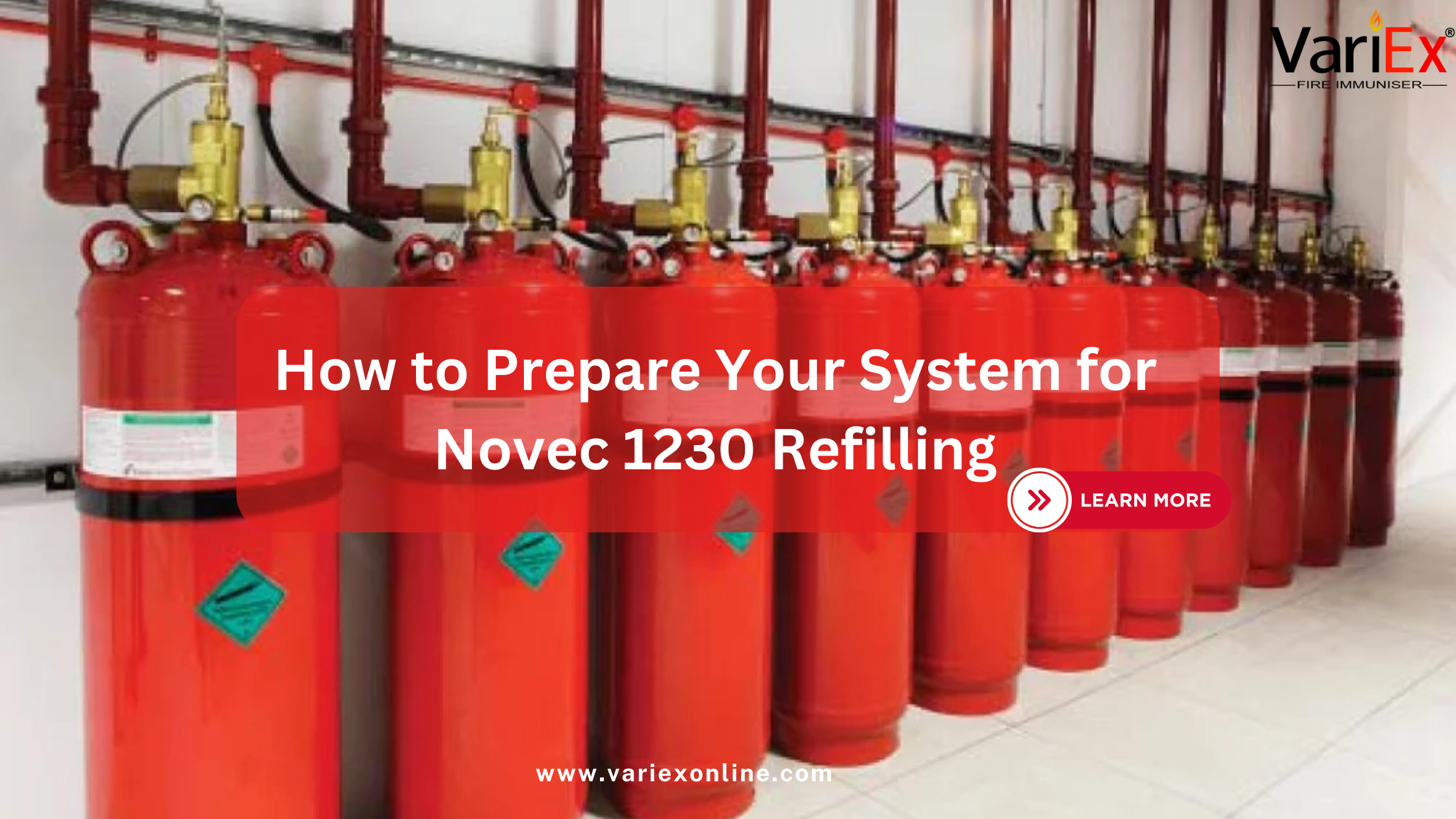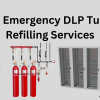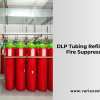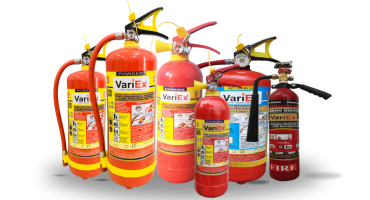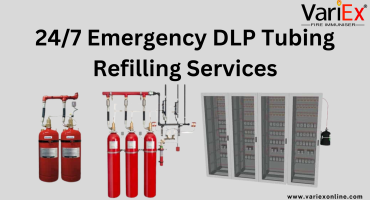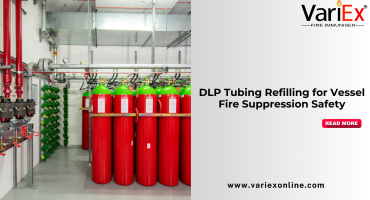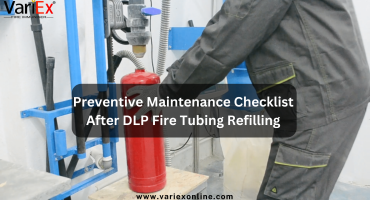![]()
Fire Immuniser
+91-7829629111
Email: info@variex.in
Varistor Technologies Pvt. Ltd.
Block-1, First Floor, Ardente Office One, Hoodi Circle, ITPL Main Road, Bengaluru, Karnataka 560048, IN
How to Prepare Your System for Novec 1230 Refilling
How to Prepare Your System for Novec 1230 Refilling
A fire suppression system is only as effective as its ongoing maintenance. When it comes to Novec 1230 fire suppression systems, refilling after a discharge or pressure loss is a critical part of its lifecycle. However, many organizations overlook the preparation process, which can lead to service delays, non-compliance, or even system failure.
This guide provides a comprehensive, step-by-step process on how to prepare your Novec 1230 system for refilling, ensuring safety, efficiency, and regulatory compliance. Whether you manage a data center, control room, or server facility, this blog is essential reading for your fire protection planning.
Why Proper Preparation for Refilling Matters
Preparing for Novec 1230 refilling isn't just about logistics—it’s about protecting high-value assets, minimizing downtime, and ensuring uninterrupted fire safety.
Key Benefits of Proper Preparation:
✅ Ensures accurate agent measurement and refilling
✅ Prevents damage during agent removal or cylinder handling
✅ Helps maintain NFPA 2001 & ISO 14520 compliance
✅ Reduces labor time and associated costs
✅ Avoids business interruptions and hazards
When Is Refilling Required?
Your Novec 1230 system will need to be refilled under the following conditions:
🔄 After any system discharge (manual or automatic)
📉 If pressure drops below threshold levels
🧪 During scheduled maintenance after 5–10 years
💥 In case of leaks or cylinder damage
Pre-Refill Checklist for Novec 1230 Systems
Before scheduling a refill, use the following checklist to ensure readiness:
| Task | Purpose | Responsibility |
|---|---|---|
| Inspect Cylinder Pressure | Confirm if refill is required | Safety officer |
| Secure Discharge Valve | Prevent accidental release | Technician |
| Disconnect Electrical Components | Avoid triggering alarms | Maintenance team |
| Verify Room Volume & Layout | Ensure agent quantity accuracy | Fire engineer |
| Clear Obstructions to System | Provide access to cylinders | Facility manager |
| Schedule with Certified Vendor | Ensure compliance & warranty | Procurement officer |
| Check for System Integrity | Verify no leak points exist | Service provider |
| Document System Status | Compliance and recordkeeping | Safety head |
Step-by-Step: Preparing for Novec 1230 Refilling
Step 1: Conduct a Pre-Inspection Assessment
Start by examining the entire fire suppression system. This includes:
Pressure gauge readings
Control panel status
Physical condition of pipes and discharge valves
Signs of leakage or corrosion
Tip: Ensure that pressure loss isn't due to sensor malfunction before proceeding with refill.
Step 2: Secure the Area
Safety first. Before any technician begins work:
Turn off HVAC systems
Disconnect power to the suppression control unit
Inform all personnel in the area
Place "Maintenance in Progress" signage
Important: Ensure fire alarms and detectors are in bypass mode during servicing.
Step 3: Isolate the Cylinder
Isolate the affected Novec 1230 cylinder from the discharge network. This prevents:
Accidental discharge
Pressure loss in connected cylinders
Safety hazards for technicians
Close the discharge valve carefully and tag it for maintenance.
Step 4: Provide System Documentation
Before refilling, share these documents with your service vendor:
System design layout
Last service record
Cylinder capacity and agent concentration
Room volume and structural changes (if any)
This helps the vendor calculate the exact amount of agent required and prepare necessary equipment.
Step 5: Ensure Accessibility and Workspace Safety
Make sure all cylinders are easy to access. Remove any obstacles and ensure proper lighting and ventilation.
If the system is installed in a server room or rack enclosure:
Cover nearby electronic equipment
Temporarily shut down sensitive devices if required
Ensure grounding is in place to avoid static discharge
Step 6: Arrange for Authorized Refilling
Only use a certified and experienced fire safety vendor for Novec 1230 refilling. Ensure:
Agent purity and batch certification
Hydrostatic testing (if cylinders are >5 years old)
Updated labeling and system pressure testing
Post-refill commissioning and leak check
Ask for a refill certificate, which is crucial for audits and insurance claims.
Table: Tools & Materials Required During Refilling
| Equipment | Purpose |
|---|---|
| Weighing scale | Measure agent quantity pre/post |
| Refill station | Transfer Novec into the cylinder |
| Pressure tester | Confirm cylinder pressure post-refill |
| Leak detection spray | Detect faulty seals or fittings |
| DOT-rated hoses | Secure refilling connections |
| Hydrostatic test setup | Test cylinder integrity (if needed) |
| Safety gear (PPE) | Ensure technician safety |
Post-Refill Checks
After refilling, technicians will perform the following:
System pressurization check
Valve re-activation
Alarm system reconnection
Room integrity test (fan test)
Final inspection report
Ensure your in-house team cross-verifies that:
System is reconnected properly
Control panel reflects full pressure
All test results are documented and signed
Regulatory Compliance & Documentation
After the process, maintain:
Updated maintenance logs
Refill certificate with agent batch number
Pre/post refill pressure readings
Any changes in design or volume
This is necessary for ISO 9001 audits, NFPA compliance, and insurance inspections.
Frequency of Refilling & Best Practices
| Condition | Recommended Action |
|---|---|
| Normal system, no discharge | Inspect annually, no refill required |
| Post-discharge (accidental or actual fire) | Refill immediately |
| Pressure drop >10% | Diagnose and refill |
| Cylinder age >5 years | Hydrostatic testing and possible refill |
| System modification (volume/layout) | Recalculate agent and refill if needed |
Tip: Keep a buffer stock of Novec agent for mission-critical facilities.
Common Mistakes to Avoid
❌ Using non-certified refill agents
❌ Ignoring pre-refill pressure check
❌ Failing to inform building occupants
❌ Overlooking system recalibration
❌ Not performing post-refill leak detection
Conclusion
Preparing for Novec 1230 refilling is more than just a technical task—it's a strategic fire protection measure that ensures business continuity, life safety, and compliance. From pressure checks to documentation and vendor selection, each step plays a vital role in maximizing the reliability of your fire suppression system.
By following the above preparation steps, you not only reduce service delays but also extend the lifecycle and efficiency of your Novec system.
Need refilling assistance? Always choose a certified partner with a proven track record and proper compliance certifications.
Frequently Asked Questions
Yes, certified vendors use mobile refill units to refill cylinders onsite safely.
Typically 2–4 hours depending on system size and number of cylinders.
Yes, it ensures that the agent concentration is maintained during discharge.
System layout, past service records, and current pressure readings.
No. Systems are designed for specific agents. Substitution requires full redesign.
Final Say
At VariEx.in and VariexOnline.com, we specialize in supplying and installing top-quality fire fighting systems and equipment. From fire extinguishers to advanced suppression systems, we offer comprehensive solutions tailored to your needs. Our experienced team ensures precise installation and maintenance for optimal safety.
Trust VariEx for reliable fire protection. Contact us online or call 7829629111 to learn more.
We specialize in manufacturing, supplying, and distributing a comprehensive range of fire fighting equipment, including state-of-the-art fire extinguishers. Read our most searched blogs and find interesting information on topics such as how to use a fire extinguisher, how to calculate fire fighting water tank capacity, fire extinguisher refilling, obtaining a Fire NOC, understanding fire fighting systems, types of fire protection systems, the fire hydrant system, and the fire sprinkler system. These resources provide essential knowledge for ensuring safety and compliance with fire safety regulations. Additionally, you can explore guides on the maintenance of fire protection equipment, the latest advancements in fire safety technology, and best practices for fire risk assessment and management.
Our expertise extends to fire alarm systems, fire hydrant systems, and fire suppression systems, including fire sprinklers. Each product meets rigorous international standards for reliability and performance, ensuring effective fire safety products tailored to diverse applications and industries. Additionally, we are providing Fire Extinguisher Refilling and AMC services to ensure ongoing maintenance and operational readiness of fire safety equipment.


